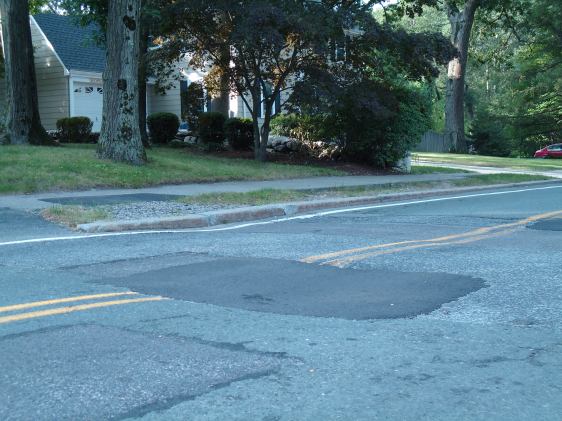
Technology has found its way into almost every facet of human existence. From entertainment to communication to healthcare, technology drives innovation, connects us, and adds new dimensions to our lives.
Over the last hundred years, technology has been used to improve existing materials and to invent new ones. It has driven the way we build things, the way we design things and the way we use things.
As a result of technology, change can be seen everywhere — or can it?
One of the few places technology has barely touched is road surfaces. Roads have been in existence since about 4000 BC. At that time, stones were used to create a hard surface to travel upon. The first paved road was found in Egypt dating back to the time period between 2600 and 2200 BC.
Perhaps the material roads are made out of has evolved since that time, but the way roads are constructed has not changed for drastically.
In the U.S., crews arrive on the scene of new road construction and carve out a path where the road will be laid. A multi-layer process of creating and leveling the road begins. The final layer will consist of a smooth asphalt material, sometimes reinforced with geosynthetics, which are polymeric products used in civil engineering.
Despite numerous technical considerations related to things like drainage and erosion, the process of building roads has not been affected by technology. Much of what is done is crude and mechanical.
The road is never perfectly straight and the surface is never perfectly flat. Rather, due to the human element involved, the road is filled with imperfections.
When a new road is built or an existing road is repaved, the surface is smooth and consistent for a relatively short time. Depending on the climate and the type and weight of traffic passing along the road, it will begin to deteriorate rather quickly.
Weather, braking and other abuses to the roads will cause potholes. Changes in temperature and a large number of heavy trucks will cause buckling and cracks. Often these defects are allowed to remain until the road becomes nearly impassable, or has reached the point where many motor vehicles would sustain damage if the road was not repaired.
High traffic areas, particularly major thoroughfares like highways, are more likely to be repaved along stretches where a lot of deterioration has taken place. Less trafficked roads, or rural roads suffer more from neglect, and are often patched in ways that leave the roads bumpy and uneven.
During the night, workers arrive at areas where potholes and crevices exist and fill them with asphalt. By looking at the result, one would think that children were playing with a bucket of molten material and poured it with young, unsteady hands into the holes. In other words, the result looks like a mess.
The asphalt is never level. It is either much higher than the rest of the road, or it is sunken below the level of the road, but it is almost never the same level as the surrounding road.
What’s even stranger is that when a utility crew digs up a section of road to repair pipes or wires beneath it, the patch they create to fill the area they dug up is also rarely level. One would expect, in this day and age, with technology abounding everywhere, that someone could invent a method for patching roads which would make the filler material level with the rest of the road.
Such an invention would make roads more passable for cyclists who are most affected by the bumps and depressions created by sloppy patching. With all the emphasis on motor vehicles and the important role they play in modern life, one would imagine that keeping roads level and evenly paved would be a priority.
Unfortunately, even though motor vehicles are the epitome of modernity, the roads they travel on remain the epitome of antiquity. Hopefully, someday, technology will catch up with road construction and maintenance. In the meantime, cyclists will have to brace themselves for a bumpy ride and hope that none of these imperfections result in a crash, a pinched tube or a harsh shock up the arms from navigating the numerous, uneven patches that are today’s roads.



